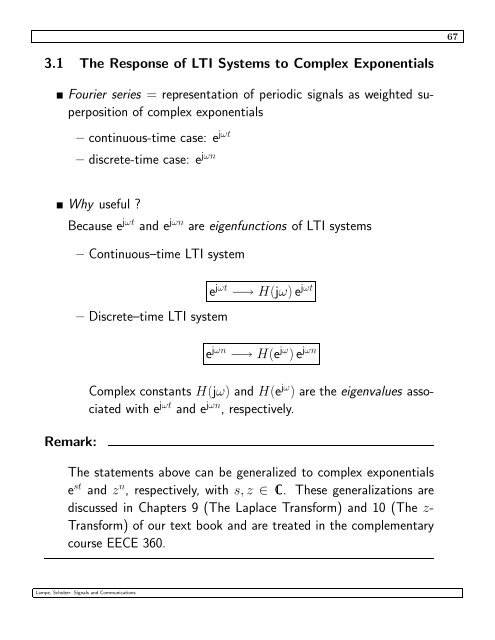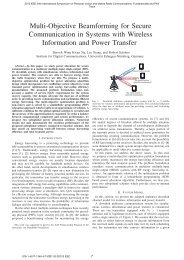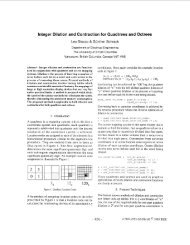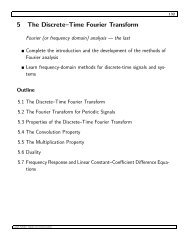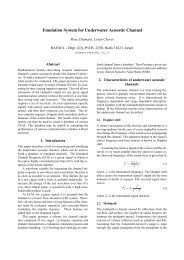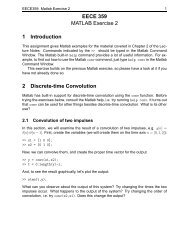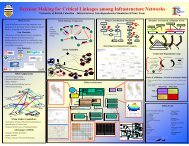3 Fourier Series Representation of Periodic Signals
3 Fourier Series Representation of Periodic Signals
3 Fourier Series Representation of Periodic Signals
You also want an ePaper? Increase the reach of your titles
YUMPU automatically turns print PDFs into web optimized ePapers that Google loves.
3.1 The Response <strong>of</strong> LTI Systems to Complex Exponentials<br />
<strong>Fourier</strong> series = representation <strong>of</strong> periodic signals as weighted superposition<br />
<strong>of</strong> complex exponentials<br />
– continuous-time case: e jωt<br />
– discrete-time case: e jωn<br />
Why useful ?<br />
Because e jωt and e jωn are eigenfunctions <strong>of</strong> LTI systems<br />
Remark:<br />
– Continuous–time LTI system<br />
– Discrete–time LTI system<br />
e jωt −→ H(jω) e jωt<br />
e jωn −→ H(e jω ) e jωn<br />
Complex constants H(jω) and H(e jω ) are the eigenvalues associated<br />
with e jωt and e jωn , respectively.<br />
The statements above can be generalized to complex exponentials<br />
e st and z n , respectively, with s, z ∈ C. These generalizations are<br />
discussed in Chapters 9 (The Laplace Transform) and 10 (The z-<br />
Transform) <strong>of</strong> our text book and are treated in the complementary<br />
course EECE 360.<br />
Lampe, Schober: <strong>Signals</strong> and Communications<br />
67


